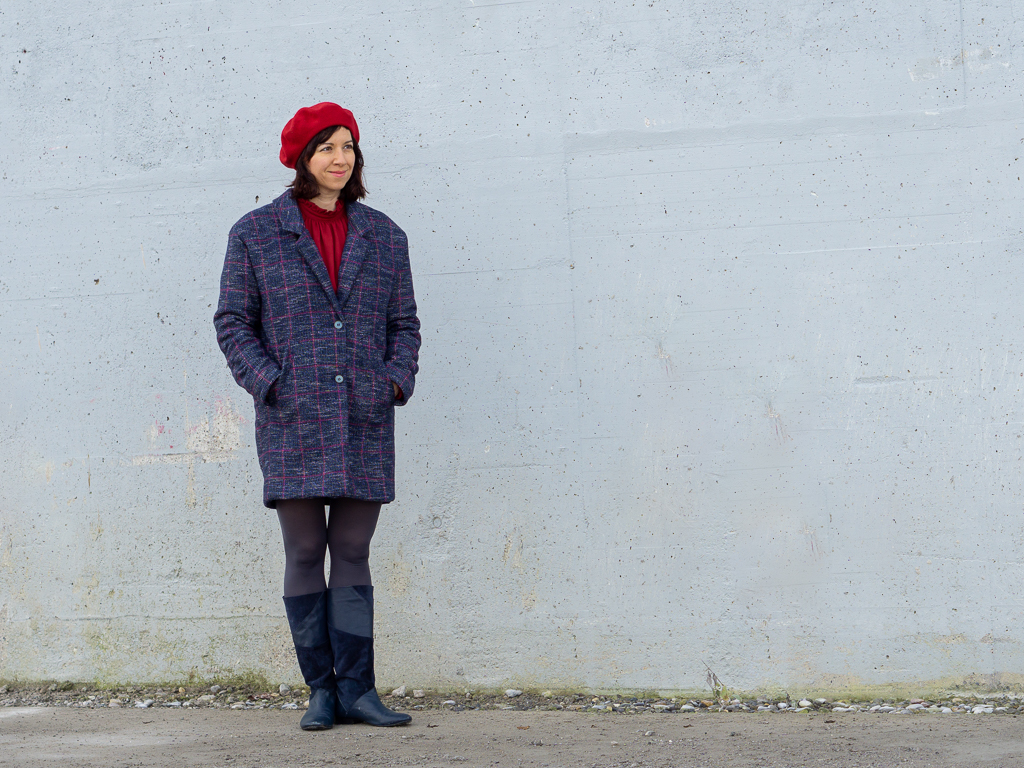Coat, Hello Heidi Fabrics
Gerard Check Coat
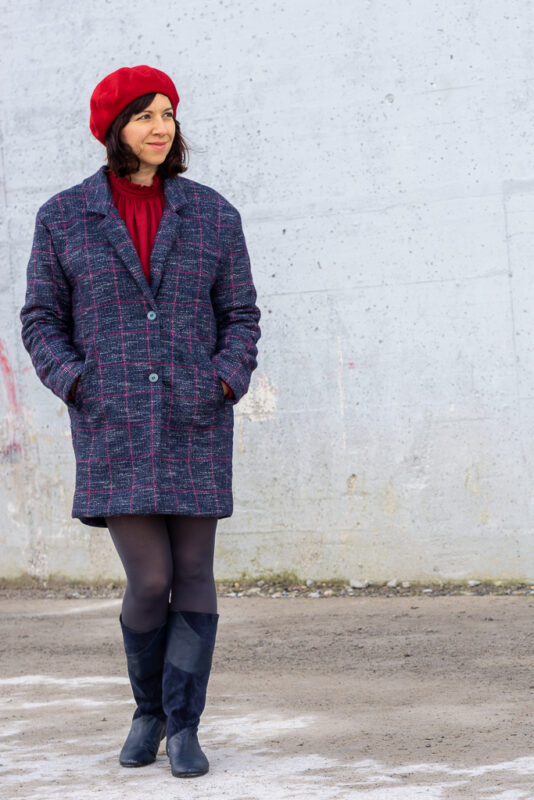
The thermometer permanently shows 0 degrees and as soon as you stick your nose out of the window, icicles hang on it. Then my heart jumps for joy, because that means: Time for a new winter coat!
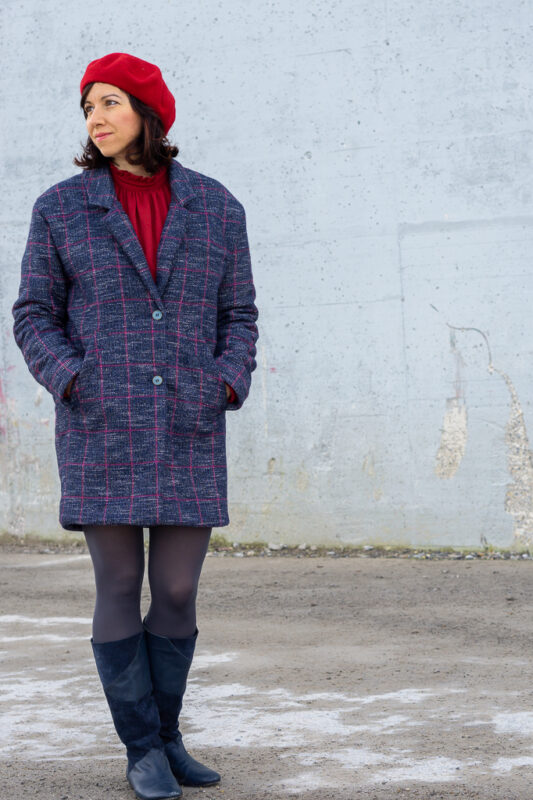
After the coat Yve, followed last year the coat Merci. This year I wanted to sew a blazer coat made of checked wool. The fact that Hello Heidi has produced a Tweed collection called ‚Check‚ was more than just perfect timing! Especially when one of the fabrics combines all my favourite colours!
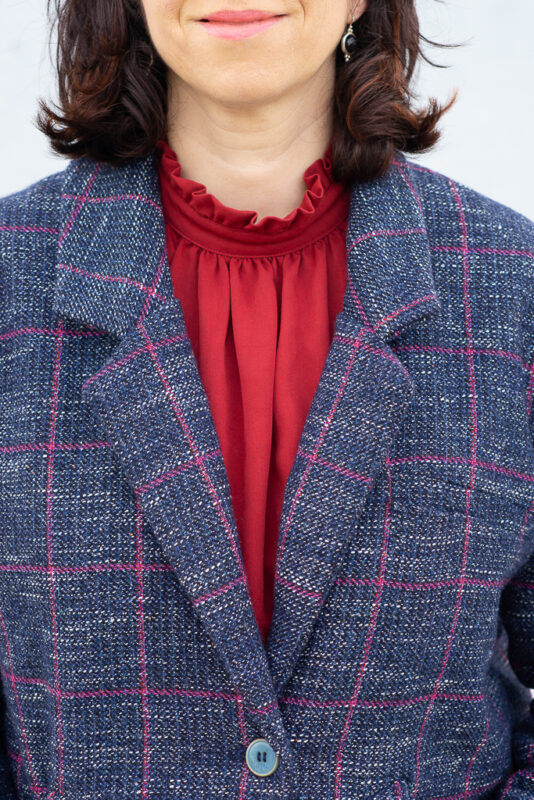
The collection consists of three different fabrics: Check Business (grey), Check Country (brown) and Check City (blue). The fabrics differ not only in colour, but also in composition and weight. I sewed the variant ‚Check City‘, with this fabric the Heidis have reinterpreted Tweed: The blue undertone is broken up by the light mélange yarn, which gives the fabric a fresh, modern look, especially in combination with the overcheck in pink and violet.
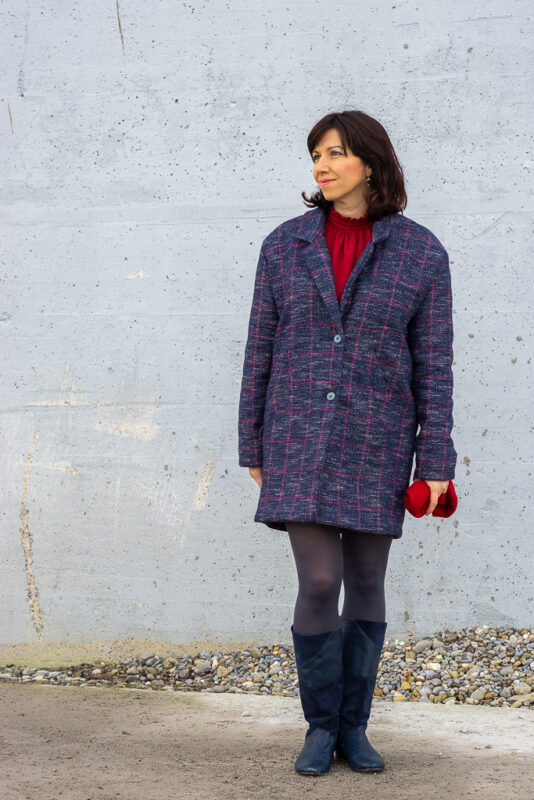
I sewed the Check City variant, with this fabric the Heidis have virtually reinterpreted tweed: The blue basic tone is broken up by the light mélange yarn, which gives the fabric a fresh, modern look; especially in combination with the Overcheck in pink and purple.
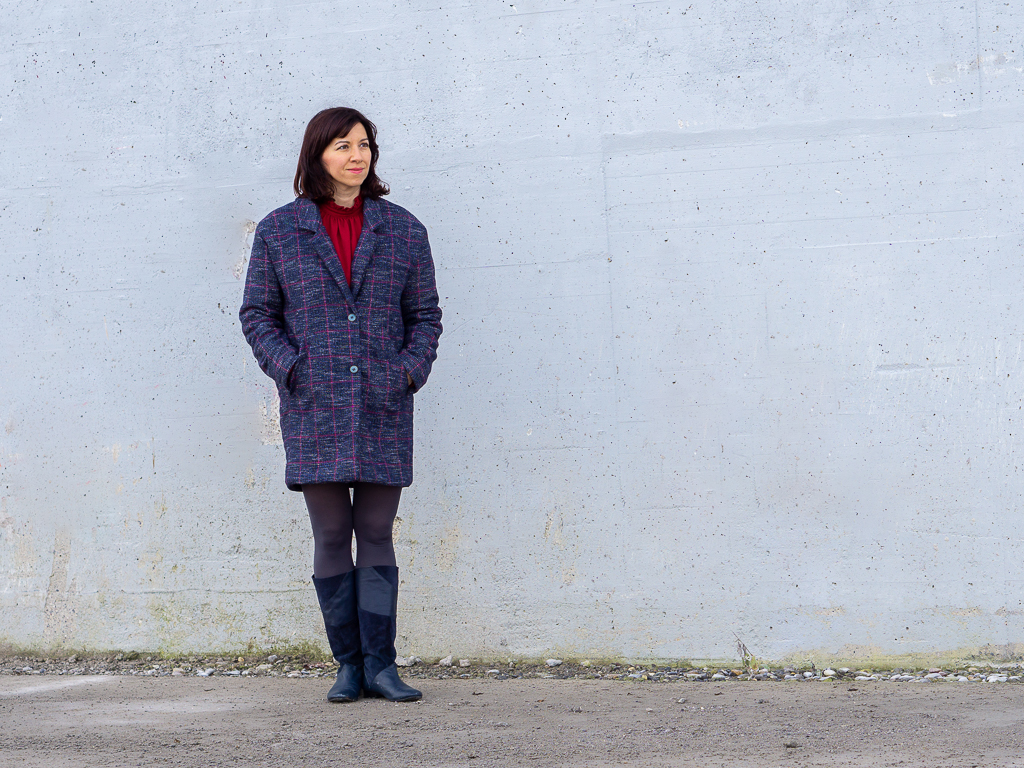
The City Check consists of slightly less virgin wool than the other two, namely 45% virgin wool, further 19% polyamide, 17% cotton, 10% polyacrylic, 5% silk, 4% viscose are contained in the fabric. Due to the cotton and silk content, the fabric falls wonderfully soft and is very comfortable to wear.
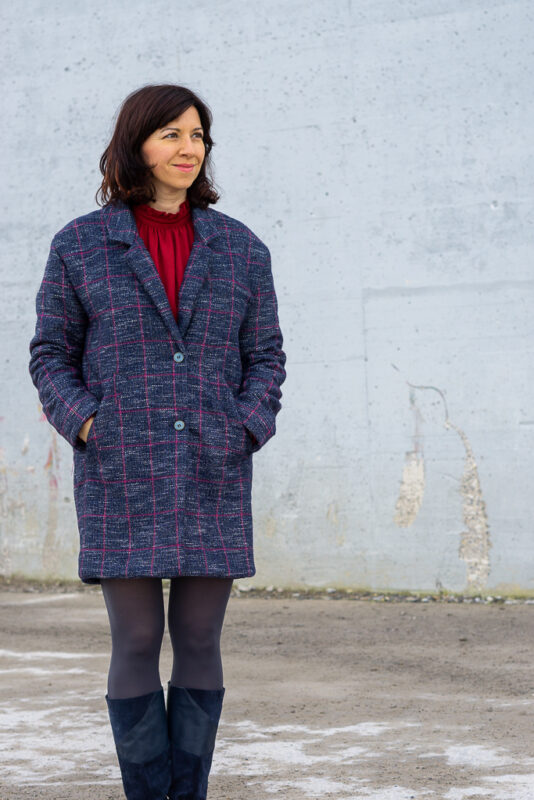
I chose to sew the coat Gerard from République de Chiffon. I bought the pattern some time ago, inspired by the many beautiful examples. What made me hesitate was the oversized cut; I wasn’t sure if it would suit me.
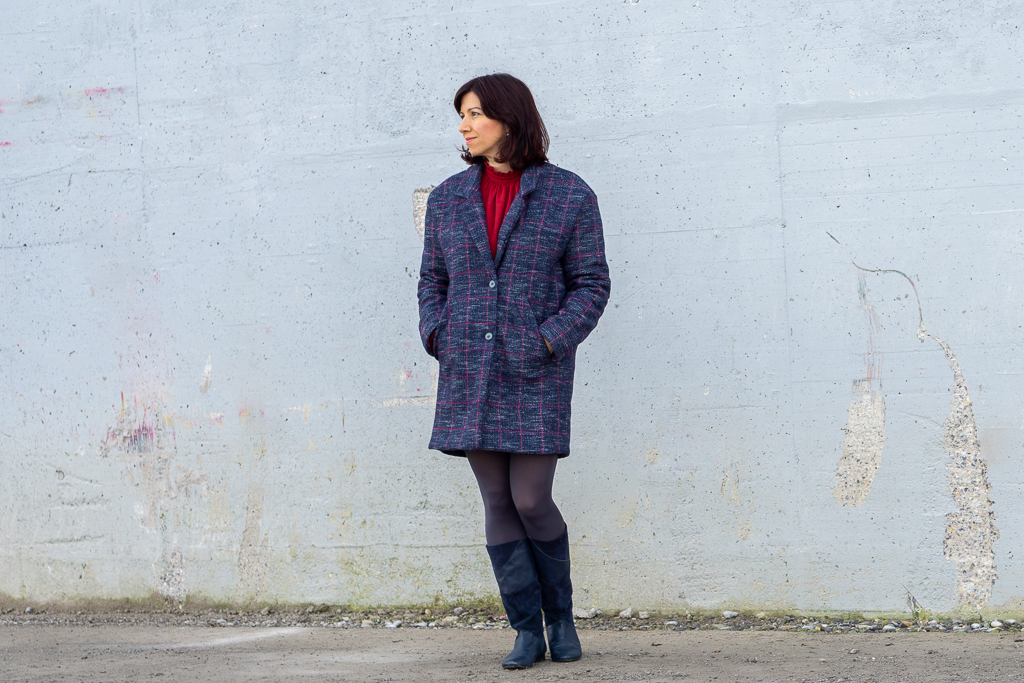
In order to gain confidence regarding the fit, I sewed a sample. Since the beginning of the year I have been attending a pattern drafting course and am therefore sewing muslin every week. I have noticed that this is not such a big effort, but it is all the more helpful to find the right fit.
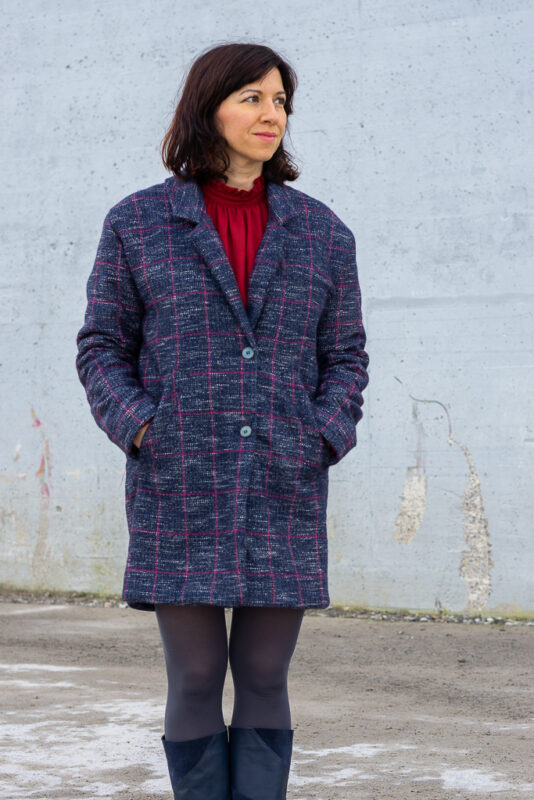
I like the design of the coat Gerard very much. It is also) drawn for three different body sizes: 1.) Under 1.60m, 2.) 1.60-1.70m, 3.) Over 1.70m. Although I’m a slightly smaller than 1.70m, I decided for variant 3, because I wanted the coat a little longer and that my long arms are covered up to the wrist. So that the coat is also nice and warm, I lined it with Thinsulate. The 1cm thick padding works wonders when it comes to warmth.
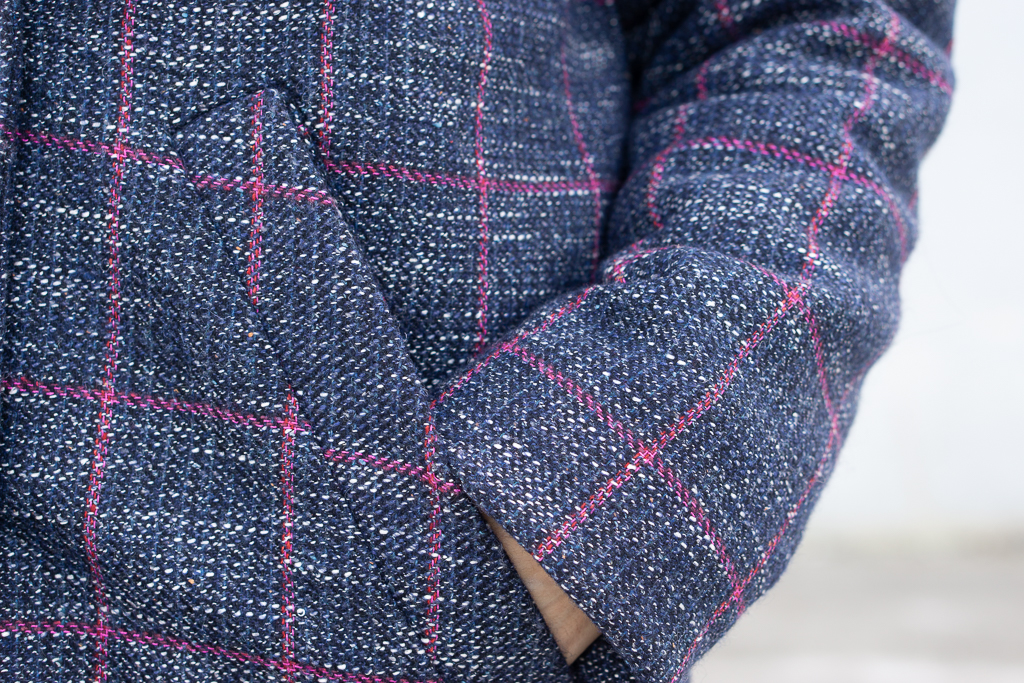
The instructions are as usual at Republique de Chiffon with only a few illustrations. That doesn’t make sewing easy. I wouldn’t recommend this pattern as a first coat; especially since I have some additional criticisms of the pattern:
Critical points on the Gerard pattern
- The coat is very large, which also some bloggers have noted. Due to the muslin I decided to sew one size smaller, i.e. size M instead of L and find it still oversized enough.
- I sewed on the welt pockets for hours. Not because it would be so difficult, but because I realized only after a while that the welts have to be sewn 1.5cm deep each. That’s why the pattern isn’t right, although I cut it exactly, but with 1cm seam allowance.
- The welt pockets are enormously large. The usual size is between 14-16 cm. But with this coat they are 19 cm tall.
- The bag pockets are accordingly also very big. Above all, they were drawn enormously wide by mistake. They come around some beyond the front middle. If one would sew the bag in such a way, one would have a giant wormhole, since no place for such a large bag is available at all. So I drew the bag a lot narrower.
- The breast welt pocket is missing the pocket bag. I was forced to draw one myself. Maybe the breast pocket is meant to be just a mock-up.
- The centre front is not drawn in. It is unclear how far the front parts should overlap. Also the marking for the buttons is missing. The first button is marked with the height at which the button should be, but not exactly where it should be placed.
- The sleeve insertion points are missing. I find them a great help, especially when sewing a two-piece sleeve.
In conclusion, it remains to be said that one nevertheless comes to a nice result. What annoys me, however, is that you don’t get all kinds of help with such a complex project. I rather felt left alone. Although it was a good challenge for me in the end, I still wish it differently. If you have any questions about this pattern, please feel free to contact me.
Happy Sewing
- Fabric: Tweed ‚Check City‘ produced and provided by Hello Heidi Fabrics
- Pattern: Gerard Coat by République du Chiffon

 Deutsch
Deutsch
